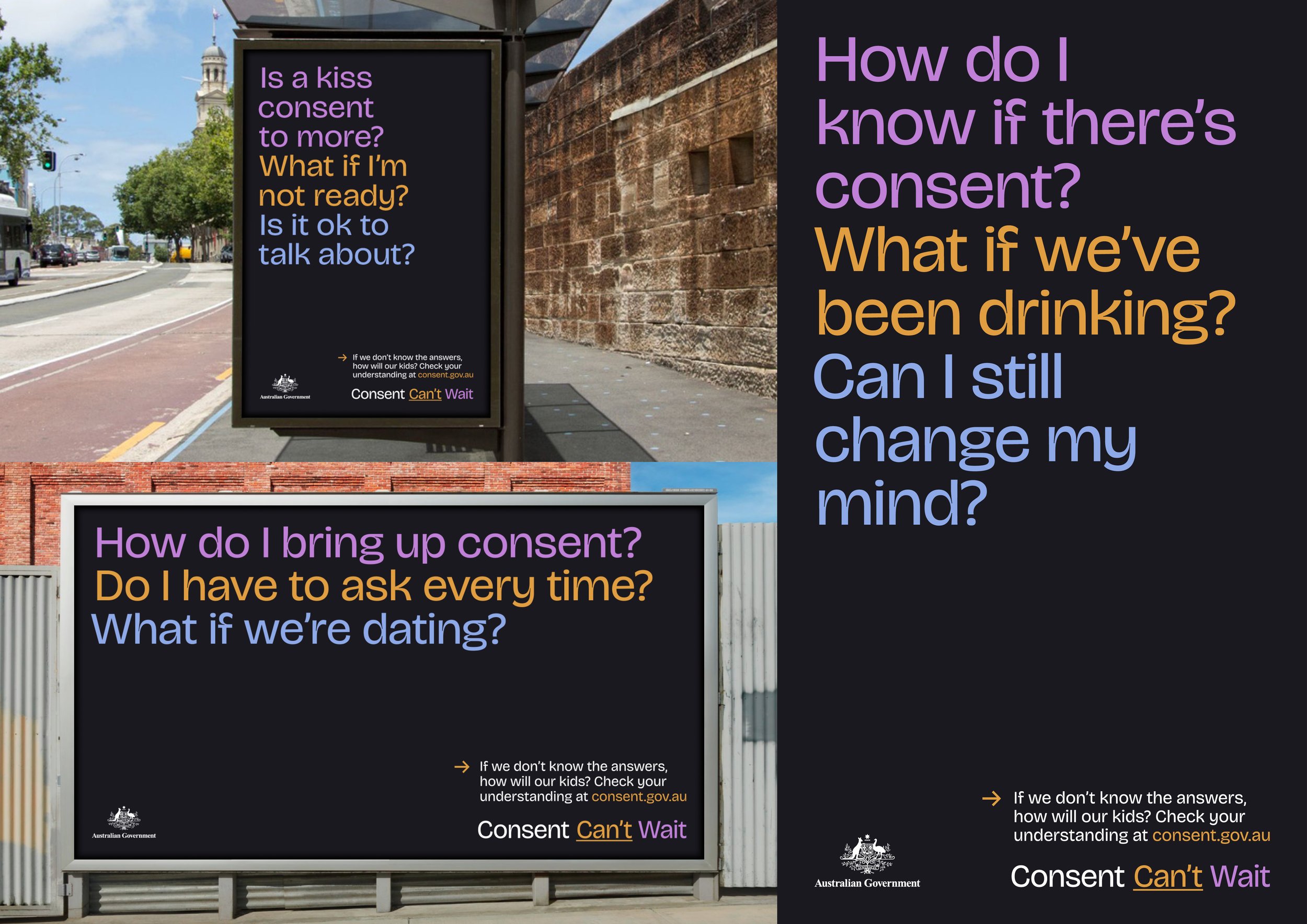Department of Social ServicesConsent Can't Wait
Learning, understanding, and talking about consent can’t wait.
The issue
Right now, across Australia, adults are engaging in consent-relevant moments, and 1 in 2 of them are confused about consent; and holding silent their questions about the topic. That’s one in every couple.
Our collective confusion has left young people unclear about what constitutes consensual relationships; leading to a rise in perpetrations of non-consent. In Australian kids aged 10-17, we see 1-in-5 women and 1-in-6 men have already experienced sexual violence.
Which raises a question: if we don’t understand consent, how can we expect young people to?
The idea
We voiced the collective questions adults hold silent about consent, in consent-relevant moments, to normalise confusion around the topic. By shifting the focus from “who’s right or wrong” to “let’s get on the same page” adults felt comfortable asking each other these questions, so they could in turn teach the next generation.
The execution
‘Consent Can’t Wait’ features real Australian couples, moments from engaging in intimacy, as we hear the real internal thoughts and questions they all hold about consent. Right before they make contact, we cut to teens in the exact same position, posing one final question: If we don’t understand consent, how will our kids?
Getting closer and closer to intimacy
The film sees adults gradually getting closer and closer to each other to drum up the urgency of consent education.
It opens on a series of wide shots, blocking the couples further apart. With each succeeding frame, we see the couples move closer together physically, in tandem with the camera, which is gradually coming in tighter and tighter into the scene, from wide-shot to mid-shot to close-up, until the couples are moments away from kissing.












